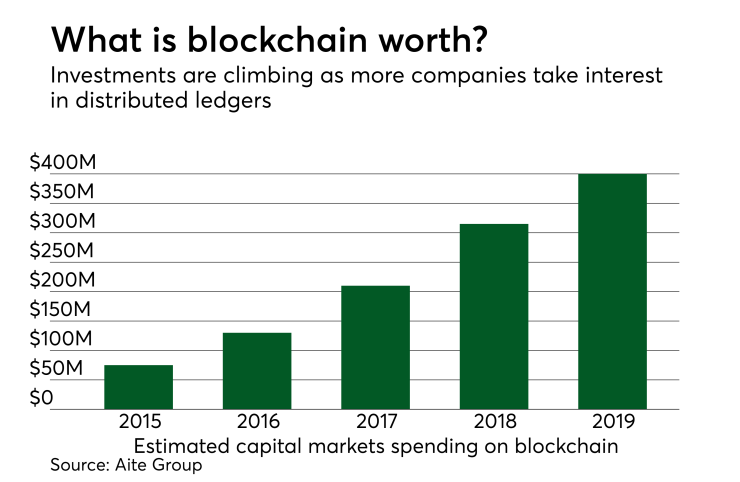Blockchain is a buzzword that is starting to lose its buzz. The word is thrown around constantly, and often people have little idea what it means. But the technology does have value, and it doesn’t just have to be an esoteric term. Instead, the blockchain has the capability to disrupt and change a number of industries.
The card payments industry is one of them. While card payments may be convenient for shoppers, the merchants have been footing the bill for this convenience with the high processing fees charged by the card processing intermediaries.
Since blockchain technology is based on the core principle of decentralization, it provides an opportunity to break through the multiple middleman fees with an alternative low-fee digital payments network. And, besides convenience, merchants can share these savings in processing fees with their shoppers to elevate their experience to a whole new level.

Let’s look at how blockchain can help improve the card payments industry, and, if it’s so great, why it hasn’t already.
The card payments industry has a lot of issues right now. It’s huge industry dominated by a handful of companies that see billions of transactions a month. One of the biggest payment card companies, Visa,
But although things seem to be working in order, there is a lot that can be improved for the average merchant. For example, merchants currently face high transaction fees. A card transaction requires the buyer to effectively authorize the seller to "pull" a payment from their account, passing through several financial intermediaries in the process.
A typical card transaction, besides the merchant and the cardholder, involves at least four parties (commonly referred to as merchant services providers). These include the acquirer (the financial institution that enables payments to the merchant), the payment gateway, the interchange (e.g., Visa, Mastercard or Amex), and the issuer (the cardholder’s bank).
With the card payment system currently in place, all fees go to these intermediaries. If a shopper is to buy a good worth $100 using a debit card as opposed to cash, these intermediaries will take between 1.5 to 3.5%, which means the merchant receives as little as $96.50.
The problem is not just with the card payments, either. Many companies who now offer “mobile payments” as an alternative to card payments still charge almost the same in processing fees. Again, this can prove costly over the year — especially in a
Despite the relative efficiency of these existing systems, users are still vulnerable to manipulations and risks. Also, these services are not offered for free by the processors, as maintenance fees and other service charges do exist. These fees add up over the course of the financial year.
This brings us on to the next point: chargeback fees. Chargeback fees occur when a customer disputes a transaction with a merchant. If the customer is right in his dispute, the card company takes the money from the merchant’s bank, rightly puts in back in the customer’s account and a fee is incurred. Problems include unauthorized transactions, goods never delivered or delivered late. Card companies can charge over $20 per dispute, which adds up over time, costing merchants potentially thousands over the year.
So let’s look at how blockchain can make the merchant’s life easier and potentially disrupt the card payments industry. First, blockchain, as you are probably aware, is a decentralized technology. Therefore, if we were to introduce blockchain to the table of the card payments industry, many middlemen could be cut out of the picture.
And with these middlemen out of the picture, transactions fees would be, too. This would effectively slice the transaction overhead and even facilitate what is known as "micro-transactions," or small transactions conducted with near-zero charges and instant verification.
Likewise with chargeback fees. Payments in a blockchain system allow the customer to decide on how much money is given, and merchants are unable to take more. There is no central authority. Rather, everything is held in a ledger. The middleman who wants to take a cut is eliminated and this benefits not just the customer but merchants as well, and makes chargeback a thing of the past.
International payments could also be made easier, as many banks charge fees for using their services abroad. A blockchain payment system would allow shoppers to buy things with ease, whenever or wherever they are in the world. And smaller merchants, who previously wouldn’t be keen on international sales due to cross-border fees, would be given the chance to flourish.
If blockchain solutions are so great, why haven’t they been taken up already? A blockchain system for payments would likely entail cryptocurrencies. And both retailers and shoppers are confused by such a system. As mentioned before, although it’s slowly gaining traction in the mainstream, blockchain is still esoteric, and retailers are keen to stick to what they are familiar with.
Volatility is the main problem that is putting off shoppers and retailers. The price of cryptocurrencies are highly volatile and frequently experiences a rise or fall of over 10% in just one day. For this reason, the use of cryptocurrencies usually involves a lot of guesswork as well as trend research, something neither shoppers nor merchants want to risk.
Complexity is another problem. The current blockchain and cryptocurrency payment solutions are designed for the early enthusiasts, with little emphasis on user friendliness. A mass adoption would call for a system as seamless as a card payment, Apple Pay or Google Pay. Shoppers, and even merchants, often aren’t too familiar with what is going on in the background. They wouldn’t have to understand the technology; it would just have to be much more accessible. This is another reason it hasn’t quite disrupted the industry just yet.
Currently, cryptocurrencies aren’t used widely. And places to spend them are even more scarce. If someone has money which can be spent through the blockchain, they are often unable to spend it for everyday purchases.
Scalability is a final problem. The early blockchain protocols (like bitcoin and ethereum) are quite constrained by the number of transactions they can process concurrently, and the cost for committing a transaction on the blockchain network is too high. But this limitation is quickly fading away with the emergence of next-generation blockchain infrastructure technologies like Stellar, Ripple and IOTA which were designed with the requirements of a highly scalable and cost-efficient payment system in mind.
There is room for it. It will just take a while to be taken on board. Blockchain technology has enormous potential as a way to securely and transparently process transactions and effectively manage data. A scalable blockchain digital payment solution can offer merchants an alternative way to accept payments without the heavy fees charged by the banks and payment processing companies on transactions and chargebacks, allowing them to provide a better value and experience to their customers.





